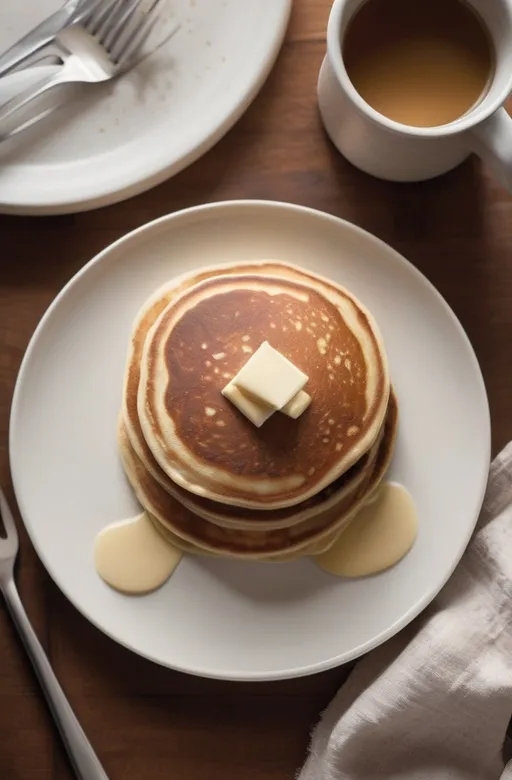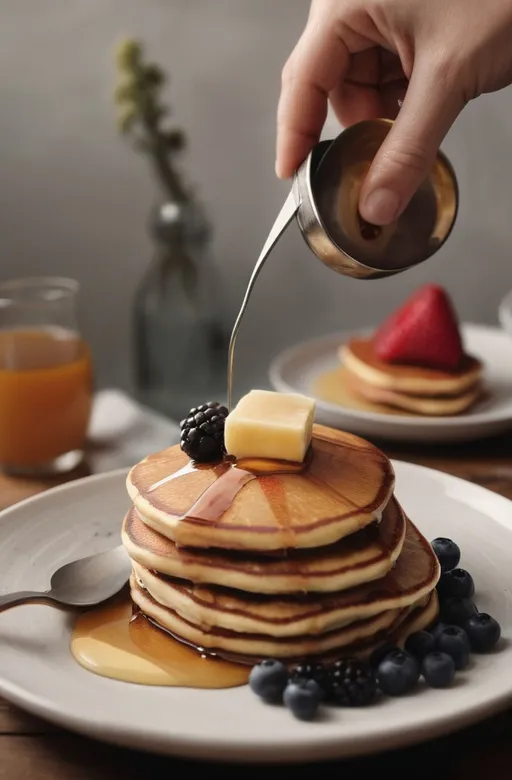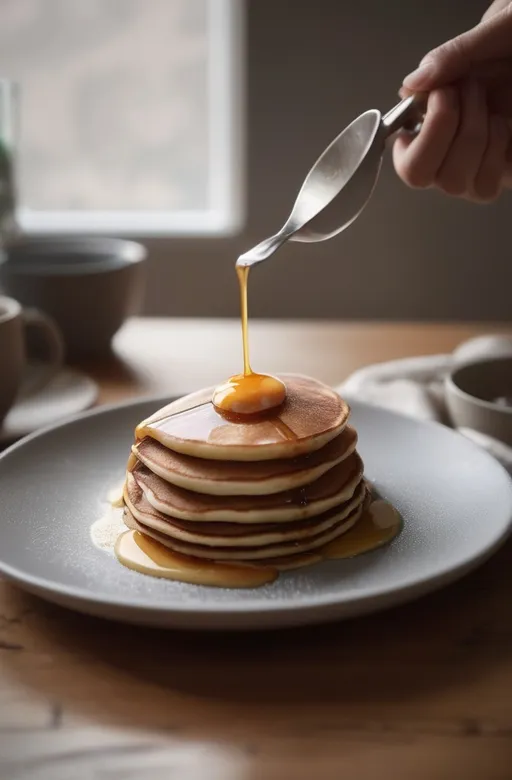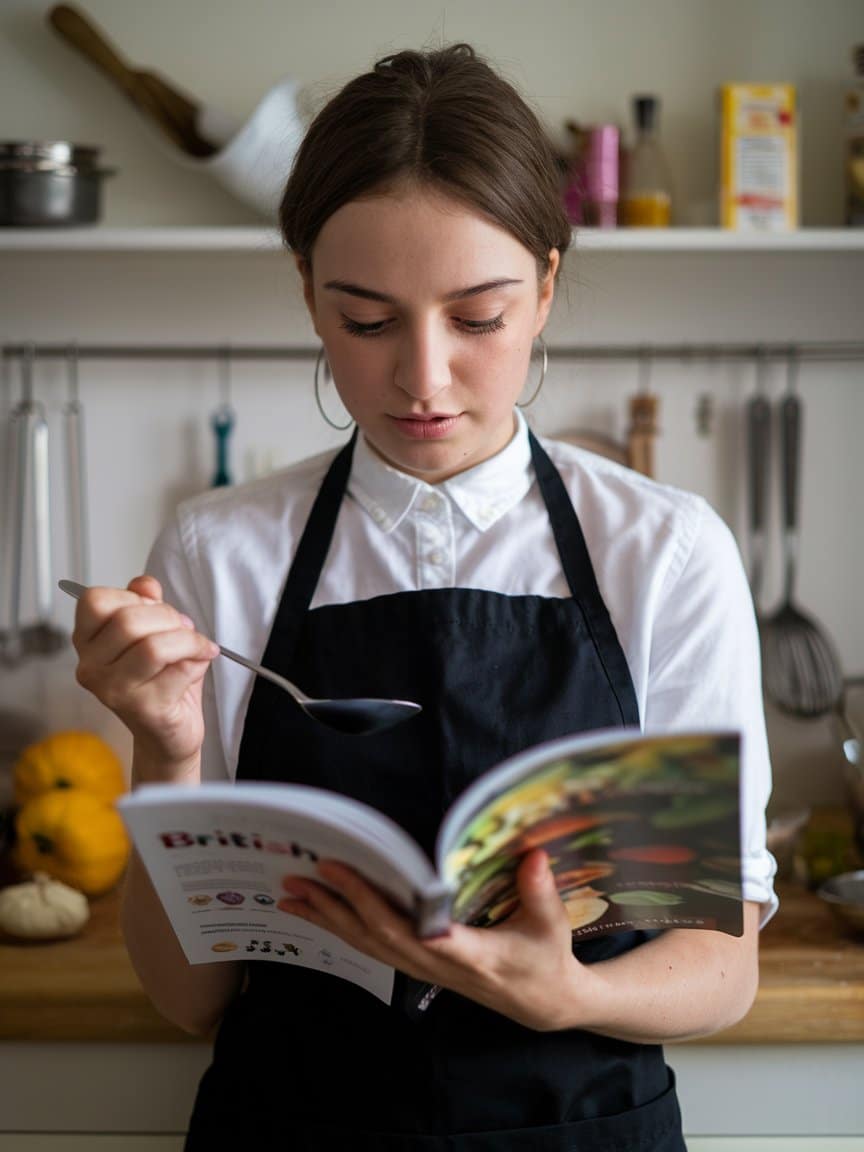There’s something magical about watching a perfectly risen pancake sizzle on the griddle, isn’t it? The anticipation of that first bite into cloud-like softness makes all the difference between an ordinary breakfast and an extraordinary one. I still remember my grandmother flipping pancakes higher than seemed possible, landing them with precision while explaining her “secrets” in hushed tones. Years later, as a professional chef, I discovered that fluffy pancakes aren’t just about grandma’s intuition—they’re about chemistry and technique.
Pancakes might seem simple, but achieving that coveted fluffiness involves understanding some fascinating food science. I’ve spent countless mornings perfecting these techniques, and I’m exited to share what I’ve learned with you today.
The Two Major Methods for Pancake Fluffiness
When it comes to creating tall, airy pancakes that practically float off the plate, there are two fundamental approaches that professional chefs rely on: chemical leavening and mechanical leavening. These methods aren’t mutually exclusive—in fact, the fluffiest pancakes often combine both. Let’s dive deep into each method.

1. Chemical Leavening: The Science of Bubbles
Chemical leavening relies on reactions between ingredients to create carbon dioxide gas, which forms bubbles in your batter and makes pancakes rise. This is primarily acheived through leavening agents.
Baking Powder: The Reliable Workhorse
Baking powder is the most common chemical leavener used in pancakes. It’s a premixed combination of an acid (usually cream of tartar) and a base (sodium bicarbonate or baking soda), along with a starch buffer to prevent premature reaction.
When baking powder meets liquid in your batter, it begins what chemists call an acid-base reaction. This produces carbon dioxide bubbles that get trapped in the batter, creating pockets of air. As the pancake cooks, these pockets expand from the heat, pushing the pancake upward.
Most commercial baking powders are “double-acting,” meaning they produce gas at two different stages:
- First reaction: When the powder meets liquid in the batter
- Second reaction: When exposed to heat during cooking
This double action is crucial for pancakes because it gives you a bit of leeway between mixing and cooking. Your batter stays aerated even if it sits for a few minutes before hitting the griddle.
Professional tip: For extra lift, some chefs add a bit more baking powder just before cooking. I’ve found that approximately 1 teaspoon per cup of flour is the sweet spot—anymore and you risk a metallic aftertaste that no amount of maple syrup can hide.
Baking Soda + Acid: The Dynamic Duo
While baking powder has its own acid component built in, some recipes call for baking soda paired with a separate acidic ingredient. Common acidic ingredients include:
- Buttermilk
- Yogurt
- Sour cream
- Lemon juice
- Vinegar
This approach gives you more control over the flavor profile. For instance, using buttermilk not only activates the baking soda but also adds a pleasant tanginess that complements the sweetness of toppings.
The reaction happens immediately and vigorously when baking soda meets acid, so these batters should be cooked promptly. I’ve seen many cooks make the mistake of letting such batters sit too long, resulting in flat, dense pancakes that make everyone at the breakfast table wonder what went wrong.
The Freshness Factor
Many home cooks don’t realize that leavening agents have a shelf life. Baking powder typically loses its potency after about 6-9 months, even when properly stored.
To test your baking powder’s effectiveness, place a teaspoon in a cup of hot water. If it bubbles vigorously, it’s still good. If the reaction is weak or nonexistent, it’s time to replace it. This simple test has saved countless pancake breakfasts in professional kitchens around the world.
2. Mechanical Leavening: The Power of Air Incorporation
The second major approach to fluffy pancakes involves physically incorporating air into the batter. This mechanical leavening relies on technique rather than chemical reactions.

Whipped Egg Whites: The Cloud Method
Perhaps the most dramatic way to achieve extraordinarily fluffy pancakes is by separating eggs and whipping the whites before folding them into the batter. This technique is borrowed from soufflé-making and creates a structure similar to a meringue within your pancakes.
When egg whites are whipped, the proteins denature (unfold) and then reform around air bubbles, creating a stable foam. When gently folded into pancake batter, this foam provides extraordinary lift.
For optimal results, whip egg whites to soft peaks—not stiff peaks. Soft peaks will fold more easily into the batter without deflating. I once tried to rush this process using stiff peaks, and wound up with streaky pancakes that resembled marble cake more than breakfast.
The folding technique is critical here. Use a wide rubber spatula and employ a down-center-up-and-over motion, rotating the bowl as you go. Stop the moment the whites are incorporated; overmixing will deflate all those precious air bubbles you’ve worked so hard to create.
The Resting Period: Patience Pays Off
This method might surprise you: sometimes doing nothing is actually doing something. Allowing pancake batter to rest for 15-30 minutes can significantly improve fluffiness.
During the resting period, several beneficial processes occur:
- Flour proteins hydrate more completely
- Gluten development relaxes slightly
- Starch molecules absorb liquid
- Any leavening reactions have time to generate bubbles throughout the batter
The result is a more cohesive batter that rises more evenly when cooked. Many top brunch restaurants prep their batters in advance specifically to take advantage of this resting effect.
One cautionary note: if your batter contains baking soda activated by an acid, the resting period should be brief (5-10 minutes), as the reaction will peter out if left too long. Baking powder batters, with their double-acting properties, benefit more from longer rests.
Proper Mixing Technique: The Gentle Touch
Overmixing is the silent killer of fluffy pancakes. When flour’s proteins (primarily glutenin and gliadin) get thoroughly mixed with liquid, they form gluten—great for chewy bread but terrible for tender pancakes.
Professional chefs often use the “lumpy batter” technique: mix wet and dry ingredients just until barely combined, with small lumps still visible. These lumps aren’t a problem; they’ll cook out on the griddle. What’s important is minimizing gluten development to keep the texture light.
I teach my culinary students to count their strokes when mixing pancake batter—no more than 10-12 turns of the spatula. It feels counterintuitive at first (especially for perfectionists), but the results speak for themselves.
Combining Both Methods for Ultimate Fluffiness
The truly exceptional pancakes—the ones that make people ask for your secret—typically combine both chemical and mechanical leavening.

Here’s my professional formula for maximum fluffiness:
- Use fresh double-acting baking powder (1 tsp per cup of flour)
- Add a small amount of baking soda (¼ tsp) if using acidic ingredients like buttermilk
- Separate eggs and whip whites to soft peaks
- Mix wet and dry ingredients separately, then combine with minimal stirring
- Gently fold in whipped egg whites
- Allow batter to rest for 5-15 minutes
- Cook on a properly preheated surface (325-350°F)
This comprehensive approach addresses every factor that influences pancake texture. The chemical leaveners provide reliable expansion, while the whipped eggs add ethereal lightness. The careful mixing and resting periods allow these leavening methods to work their magic without interference.
Ingredient Selection for Ultimate Fluffiness
Beyond the leavening methods, certain ingredient choices can dramatically influence pancake texture.

Flour Matters: Protein Content and Alternatives
All-purpose flour (with approximately 10-12% protein) is the standard choice, but professional kitchens often blend flours for optimal results. Cake flour (7-9% protein) produces exceptionally tender pancakes but may lack structure. A 50/50 blend often yields the perfect balance.
For those exploring gluten-free options, a combination of rice flour, tapioca starch, and potato starch can work well, but additional binders (like xanthan gum) are typically needed to prevent crumbling. Gluten-free pancakes generally benefit more from the whipped egg white method, as they need extra help with structure.
Fat Selection: Flavor and Function
The type of fat used in pancakes affects both flavor and texture:
- Melted butter adds richness but can make pancakes slightly denser
- Neutral oils (like canola) produce lighter texture but less flavor
- Browned butter offers complex nuttiness while maintaining fluffiness
Many top restaurants use clarified butter or ghee in their pancake recipes to get butterfat’s flavor without its milk solids, which can burn on the griddle.
Sugar’s Secret Role
Beyond sweetness, sugar performs several important functions in pancake batter:
- Tenderizes the texture by interfering with gluten formation
- Promotes browning through caramelization
- Helps retain moisture
I typically use about 2-3 tablespoons of sugar per cup of flour—enough to enhance texture without making the pancakes overtly sweet. This leaves room for maple syrup, fruit, or other toppings without creating sugar overload.
Cooking Techniques That Preserve Fluffiness
Even the perfect batter can fall flat without proper cooking technique. Here are the professional standards:

Temperature Control: The Golden Zone
The ideal griddle temperature for pancakes is between 325°F and 350°F (163°C-177°C). Too cool, and the pancakes will absorb too much fat and cook unevenly. Too hot, and the outside will burn before the inside cooks through.
Professional kitchens use the water test: sprinkle a few drops of water on the cooking surface. If they skitter around and evaporate within 2-3 seconds, the temperature is perfect.
The Flip Timing: Once and Only Once
Patience is essential when cooking pancakes. Wait until bubbles form on the surface and the edges begin to look set—usually about 2-3 minutes. Then flip with conviction, using a thin spatula that can get fully underneath the pancake.
The second side needs less time, typically 1-2 minutes. Multiple flips compress the pancake and release steam that would otherwise contribute to height.
I’ve seen countless cooks ruin perfect batter by flipping too early or too often. Trust the process—the pancake will tell you when it’s ready.
Serving Immediately: The Final Countdown
Pancakes begin losing their optimal texture the moment they leave the griddle. The steam that created all those wonderful air pockets starts to condense, potentially making pancakes soggy or dense.
If you must make them ahead, professional kitchens keep pancakes in a warm oven (200°F/93°C) in a single layer on a wire rack. This preserves texture better than stacking, which compresses lower pancakes and traps steam.
Troubleshooting Common Pancake Problems
When fluffiness falls flat, here are the likely culprits:

Dense, Heavy Pancakes
- Overmixed batter (developing too much gluten)
- Expired or insufficient leavening agents
- Batter too thick (needs more liquid)
- Pan too cool (causing prolonged cooking that deflates air bubbles)
Pancakes That Don’t Rise
- Leavening agents inactive or expired
- Incorrect acid-to-base ratio when using baking soda
- Egg whites underwhipped or overmixed into batter
- Cooking temperature too low
Uneven Rising
- Uneven heat distribution on cooking surface
- Inconsistent batter thickness when poured
- Hot spots on pan or griddle
- Inadequate resting period for batter
FAQs
Why did my pancakes rise beautifully but then deflate?
This typically happens when pancakes are undercooked in the center. The exterior sets while the interior hasn’t solidified fully. As the steam escapes, the structure collapses. Ensure your cooking temperature isn’t too high and give pancakes adequate time to cook through completely.
Can I make the batter the night before?
For baking powder-leavened batters, yes, but separate the dry and wet ingredients until morning. For batters using whipped egg whites, it’s best to prepare fresh, as the egg white structure will collapse overnight. If using baking soda with an acid, the reaction will be spent by morning.
What’s the best way to ensure consistent pancake size?
Professional kitchens often use portion scoops (such as a ¼ or ⅓ cup measure) to dispense batter. For perfectly round pancakes, some chefs use ring molds on the griddle, but this is generally unnecessary for home cooking.
Why do restaurant pancakes seem fluffier than mine?
Besides following the methods described above, many restaurants use specialized equipment: dedicated griddles with precise temperature control, industrial mixers that incorporate air effectively without overworking the batter, and sometimes even pressurized batter dispensers that inject additional air.
Does altitude affect pancake fluffiness?
Absolutely. At higher elevations (above 3,500 feet), leavening agents work more rapidly due to lower atmospheric pressure. You’ll typically need to reduce baking powder/soda by about 20% and perhaps increase liquid slightly to compensate for faster evaporation.
Conclusion
Mastering fluffy pancakes requires understanding both the science behind leavening and the art of proper technique. Chemical leaveners provide reliable rise through controlled reactions, while mechanical leavening through whipped egg whites creates incomparable lightness.
The truly exceptional pancake combines both approaches, along with careful attention to ingredients, mixing methods, and cooking techniques. Whether you’re cooking for family on a lazy Sunday or plating for customers at a busy brunch service, these principles remain the same.
Remember that perfect pancakes come with practice. Don’t be discouraged by the occasional flat batch—even professional chefs sometimes miss the mark. The journey toward pancake perfection is filled with delicious experiments, each one bringing you closer to that ideal combination of golden exterior and cloud-like interior.
Now that you understand the science and technique behind truly fluffy pancakes, you’re equipped to create breakfast masterpieces that would make any chef proud. Happy cooking!

Veronica is a passionate food enthusiast with over three years of experience in exploring and writing about diverse cuisines. Her expertise lies in reviewing restaurants, sharing creative recipes, and discovering the latest food trends. As the voice behind FoodieRecap.com, Anju brings fresh perspectives and culinary insights to her audience.
